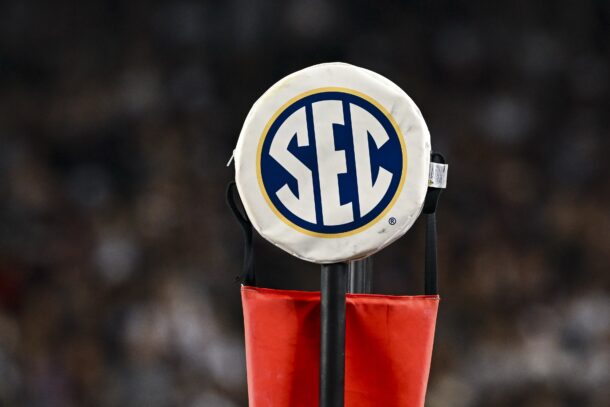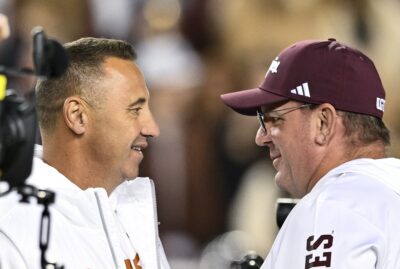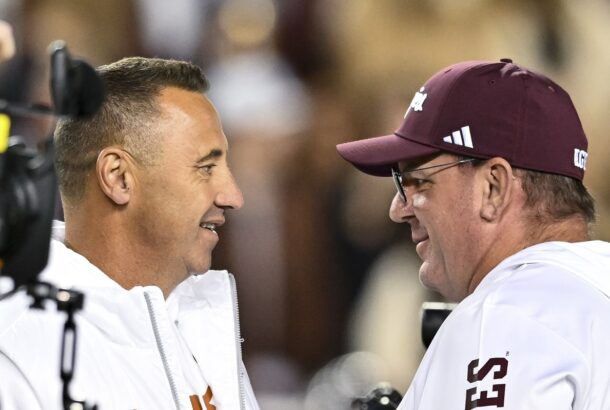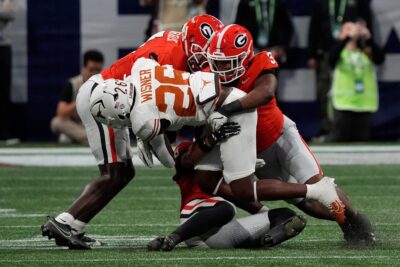Ad Disclosure
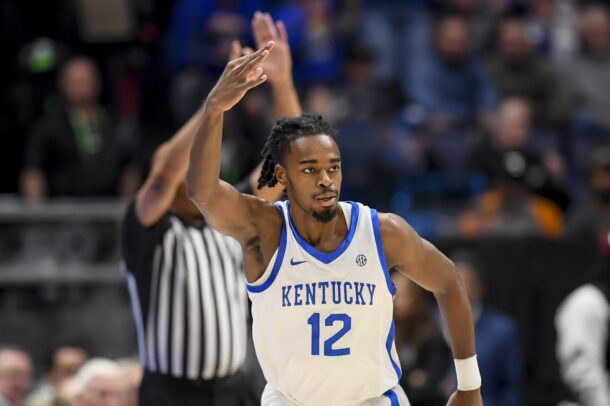
Antonio Reeves, the Pelicans, and Kentucky’s history in the NBA Draft’s second round
Antonio Reeves scored 1,155 points in his 2 seasons at Kentucky after transferring in from Illinois State. In doing so, he produced the second-most productive 2-year span in program history. Considering the program pedigree in Lexington, making a bit of history in your Kentucky career is quite the accomplishment.
But Reeves entered the 2024 NBA Draft as a 23-year-old guard without much of a reputation as a defender or a playmaker and that led to a second-round selection on Thursday night.
The Orlando Magic made the pick at No. 47, but the New Orleans Pelicans traded for the rights to Reeves. He’ll begin his career in the bayou.
Reeves faces an uphill climb as a late-second-round selection. Since the NBA Draft moved to 2 rounds in 1989, the Wildcats have had 18 players (Reeves included) taken in the less glamorous end of the draft.
Seven of those players had NBA careers that lasted 4 years or less. Two others had to jump overseas in the middle of their NBA careers. There are several who carved out enduring roles for themselves (Keith Bogans, Jodie Meeks) but the path for a late second-rounder is often times more treacherous than not.
Here’s the list of Kentucky’s second-round exports:
- Antonio Reeves (47th overall, 2024 NBA Draft)
- Chris Livingston (58th overall, 2023) — 21 NBA games, 0 starts, 26 points
- Brandon Boston Jr. (51st overall, 2021) — 105 NBA games, 1 start, 653 career points
- Nick Richards (42nd overall, 2020) — 200 NBA games, 65 starts, 1,349 career points
- Jarred Vanderbilt (41st overall, 2018) — 273 NBA games, 168 starts, 1,661 career points
- Hamidou Diallo (45th overall, 2018) — 265 NBA games, 44 starts, 2,272 career points
- Tyler Ulis (34th overall, 2016) — 133 NBA games, 58 starts, 998 career points
- Andrew Harrison (44th overall, 2015) — 145 NBA games, 64 starts, 1,012 career points
- Dakari Johnson (48th overall, 2015) — 31 NBA games, 6 starts, 55 career points
- Doron Lamb (42nd overall, 2012) — 100 NBA games, 0 starts, 345 career points
- Darius Miller (46th overall, 2012) — 271 NBA games, 28 starts, 1,597 career points
- Josh Harrellson (45th overall, 2011) — 75 NBA games, 4 starts, 265 career points
- DeAndre Liggins (53rd overall, 2011) — 177 NBA games, 24 starts, 346 career points
- Jodie Meeks (41st overall, 2009) — 539 NBA games, 204 starts, 4,988 career points
- Joe Crawford (58th overall, 2008) — 2 NBA games, 0 starts, 9 career points
- Keith Bogans (43rd overall, 2003) — 671 NBA games, 333 starts, 4,257 career points
- Mark Pope (52nd overall, 1996) — 153 NBA games, 57 starts, 285 career points
- Rodney Dent (31st overall, 1994) — 0 NBA games
Kentucky’s pedigree in the NBA Draft is and has been strong. Bogans was a consistent role player for a decade. Meeks was the same. Vanderbilt developed into a role player in Minnesota and was attractive enough to be traded for by the Lakers.
Of course, looking at just points and appearances doesn’t make for a comprehensive list of NBA utility. Players like Miller and Meeks were asked to fill scoring roles off the bench for their teams. Others were asked to do different jobs.
Reeves will be at his best as a microwave scorer for a second unit. And how long he’s able to stick in the NBA will be determined by his ability to do so at a high level.
As an older rookie, you wonder whether Reeves can still grow into a 2-way guard. With a 6-foot-5 frame, he certainly has the size (and lateral movement) to be a net-neutral defender, but the physicality just isn’t always there. He’ll need to get stronger.
And in 3 seasons at Illinois State, he averaged 1.8 assists per 40 minutes. (He averaged the same across 2 years at Kentucky.) While he rarely killed the offensive flow with turnovers (career 2.1 per 40), he wasn’t setting up teammates with any regularity.
Reeves is a shoot-first player. His usefulness on offense is in his diverse shot-making ability.
He shot 38% from 3 over the course of his college career, including a 42% clip on high volume at Kentucky (7.8 3s per 40). He also upped his free throw attempts to a career-best 5.1 per 40 last season. He’s a catch-and-shoot threat as a spot-up shooter, and he’s able to attack closeouts and punish defenses with a really effective mid-range floater.
“I feel as if I’m the best shooter in the draft,” he said at his introductory press conference.
Added New Orleans GM Bryson Graham: “He’s a marksman.”
Reeves is a capable enough finisher at the rim, but he needs to develop his ability to shoot 3s out of DHO sets to really round out the offensive arsenal.
Related reading: NBA Rookie of the Year betting odds for Reed Sheppard, Dalton Knecht, and Rob Dillingham
There are second-round success stories in the NBA’s history. Draymond Green is often cited. Jalen Brunson was a second-rounder. Nikola Jokic is obviously the biggest name. But there’s a difference between the 33rd pick (Brunson) and the 47th. Early in the second, there are expectations. Late in the second, teams are sending out fliers. It’s important to land in the right spot.
Marc Gasol was a 3-time All-Star after being the 48th overall pick. He radically changed his body after entering the league. Lou Williams was a 3-time Sixth Man of the Year recipient after being the 45th overall pick. He was a career assassin off the bench.
Reeves could aim for that.
And there are certainly more avenues for teams to develop late-draft selections now than before. The introduction of 2-way contracts — which allowed teams to carry extra players above the 15-man in-season roster limit and split their time between the NBA and G League — was a smashing success. So much so that the NBA now allows teams to carry 3 such players instead of the initial 2.
New Orleans has a few moves left to make, one would think, before this picture becomes clear. According to multiple reports, they traded for All-Star guard Dejounte Murray on Friday, a 6-foot-5 player who can run an offense or play off-ball.
He’s a strong fit with Zion Williamson. His arrival puts the future of wing Brandon Ingram in doubt, though. New Orleans also still has CJ McCollum in the backcourt, but it shipped out second-year guard Dyson Daniels in order to land Murray.
New Orleans drafted a center from Baylor, Yves Missi, with its first-round pick. Reeves was the team’s only second-round selection. Does he get a consistent shot with the Pelicans in Year 1? After a 49-33 season and a first-round sweep in the Playoffs, New Orleans will be looking to build. The Pels are +1400 to win the West at FanDuel, behind 6 other teams.
That can obviously change with trades and free agency. The 2024-25 iteration of the Pelicans is still being built. Kentucky’s longstanding track record of producing competent NBA players — particularly guards — suggests Reeves has a chance to be part of the picture in New Orleans. After all, they traded into the second to get him.
The Pels need shooters around their franchise centerpiece, and that’s exactly what Reeves brings to the table.
Related: Calling all Kentucky residents. The Wildcats saw 3 players selected in the 2024 NBA Draft. Want to bet on their NBA futures or their new teams? Get signed up with one of our top recommended Kentucky sports betting apps for a sign-up bonus to get you started.
Derek Peterson does a bit of everything, not unlike Taysom Hill. He has covered Oklahoma, Nebraska, the Pac-12, and now delivers CFB-wide content.
